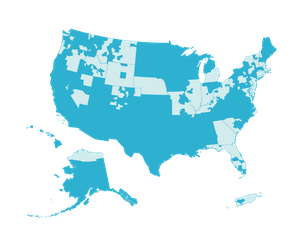Getting investors and lenders to take on ventures in low-income rural places can be a tough sell. But stagnant economies in our heartland can’t rebound without innovative support. In an article for ABA Banking Journal, Suzanne Anarde, director of Rural LISC, shows how even modest investment can have major impact. Creative financing helped to adapt a former houseboat builder into a manufacturer of prefab homes in Kentucky, and an old department store was converted to affordable apartments and health clinic in Michigan. These and similar projects across the country reap great returns for investors and communities alike.
The excerpt below is from:
"Investing in Strong Rural Communities"
by Suzanne Anarde, ABA Banking Journal
When it comes to community development, rural America seems to have a bit of a split personality.
On the one hand, bucolic, tight-knit towns are lifted by hard work and resilience. On the other, communities torn by job loss and decline find themselves among the most difficult places to live in the country.
Building on the first to recover from the second can be a massive, long-term undertaking. It requires innovative partnerships that bring new housing, businesses and jobs to long-distressed areas, while also considering the health and education needs of the people who live there. This isn’t just about philanthropy; rural America needs the kind of lending and investing that is both good for business and good for communities.
Our job at the Local Initiatives Support Corporation is to help bring those pieces together, building the capacity of nonprofits to meet local needs, assembling capital to finance projects and offering expertise on a range of economic development issues to help local leaders create new opportunities for residents. To date, that has meant nearly $15 billion of community development investments nationwide, including $300 million for rural communities.

You don’t have to look far to see why this is so important. Start in New England, where amid the rolling hills of the Maine highlands, you come to the town of Dover-Foxcroft. It’s home to hot air balloon races and the state’s annual whoopie pie festival—and it has been hit hard by the loss of manufacturing jobs and the often-toxic land that industrial plants have left behind. Unemployment here approaches 12 percent.
Community leaders have worked tirelessly to revive the local economy. One of the largest investments to date sits on the banks of the Piscataquis River, where the long-shuttered Mayo Mill woolen complex is being transformed into rental apartments, retail shops, artist studios, a restaurant, a farmers market and a boutique hotel—all in a community of 4,200 residents. The plan is even restarting a nearby hydroelectric plant to serve as an energy source. Continued[+]...
